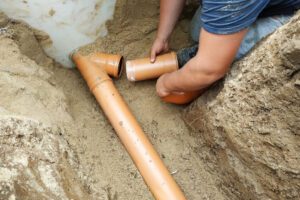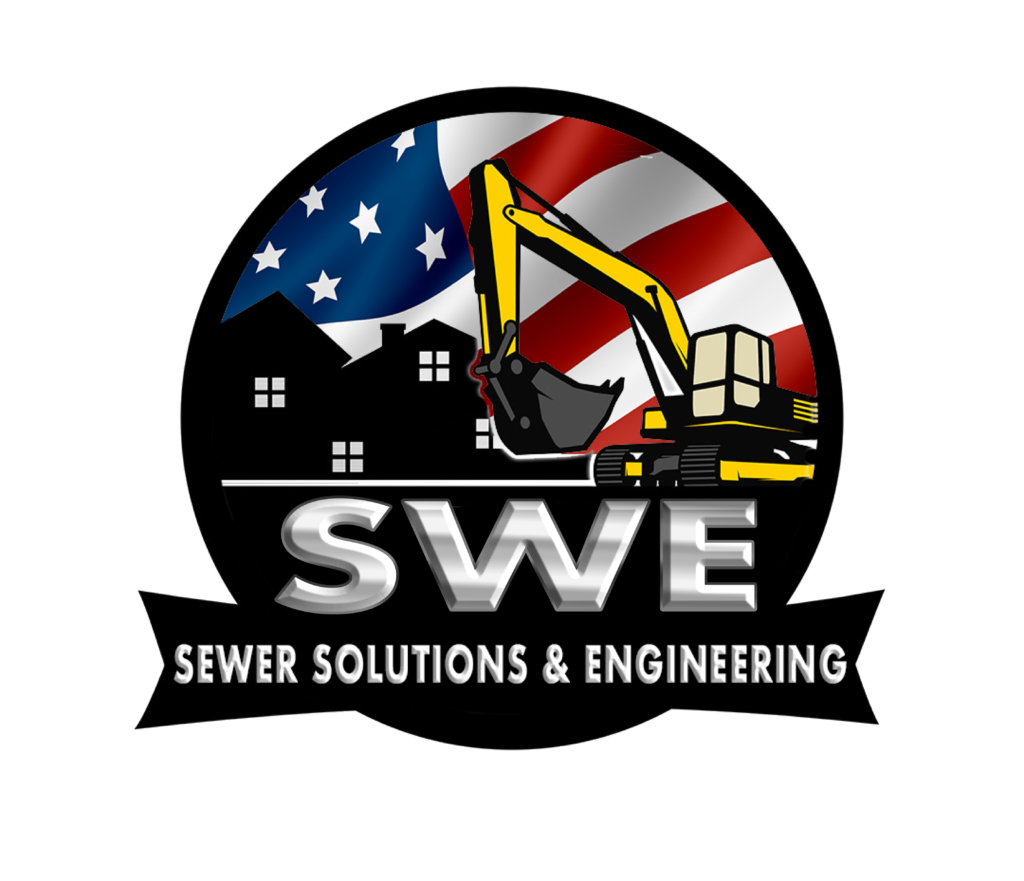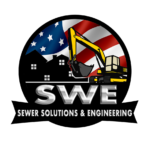Sewer Line Installation
Want to install a sewer pipeline for your new or existing home, but don’t know how? Different materials and diameters mean that there’s more than one way to complete a sewer line installation. There are advantages and disadvantages to both a septic system and a sewer system. The problem may be that some areas may require you to convert to a sewer system. At that point, only a couple of things matter PRICE and WORKMANSHIP.
We have a record of producing quality and a reputation for excellence when it comes to new sewer line installations. We assist with hooking up septic systems to modern sewer services offered by municipalities throughout LA, Orange, San Bernardino, and Riverside Counties.
Schedule Service Online
Easy as 1-2-3
Sewer Line Installation Process
The installation process of a residential sewer line involves several key steps. First, the area is excavated to create a trench for the sewer line. Next, the sewer line is carefully placed in the trench and connected to the existing plumbing system. The sewer line is then tested for proper functionality and finally backfilled. Proper sewer line installation ensures efficient and reliable wastewater disposal for residential properties.
Once the sewer line is installed, it is important to regularly maintain and inspect it to prevent any potential issues. Regular cleaning and flushing can help prevent clogs and blockages, ensuring a smooth flow of wastewater. Additionally, inspecting the sewer line for any cracks or leaks can help identify and address any potential problems early on. By following these steps, homeowners can ensure the longevity and effectiveness of their residential sewer line.
Reasons for Sewer Pipe Installations
Sewer line installations are necessary for several reasons. First, they help to ensure proper sanitation and waste removal, preventing the buildup of sewage and potential health hazards. Additionally, installing sewer lines can improve the overall infrastructure and functionality of a community, allowing for efficient wastewater management. Moreover, sewer line installations can also contribute to environmental conservation by reducing the risk of contamination and pollution.
Sewer line installations play a crucial role in urban development, enabling the expansion and growth of residential and commercial areas. These installations provide essential plumbing services that support the well-being and quality of life for residents, businesses, and visitors. They also promote economic development by attracting investments and facilitating the establishment of industries that rely on proper sanitation systems. Overall, sewer line installations are an integral part of modern society, providing numerous benefits that contribute to public health, environmental sustainability, and societal progress.
Sewer Pipe Installation Services in Southern California
If you find yourself with a sewer line that requires repair, you have two choices: excavate a trench surrounding the sewer pipes or employ trenchless techniques for sewer drain repair. Opting for trenchless drain pipe repair proves to be more cost-effective and minimizes the need for extensive excavation work. The usual procedure commences with a thorough examination using a sewer camera. An expert technician inserts a video camera into the sewer line to initiate the inspection and suggests potential repair methods. The potential solution for severe sewer pipeline damage may involve a new sewer line installation. Our skilled plumbers diligently search for indications to identify the damage’s underlying source or obstruction, which may be attributed to tree root intrusion (pun unintended). Such damage has the potential to result in blockages and can serve as a cause for leaks, which may deteriorate over time and result in substantial expenses.
Homeowners are reluctant to request a new sewer line installation due to the extensive labor and cleanup involved from the excavation. Additionally, this method prolongs the project’s duration and escalates the homeowner’s expenses. Trenchless sewer repair offers a remedy for bypassing the expensive process of excavating your yard and avoiding the associated mess. Our service technicians take personal responsibility for their professional standing in every circumstance.
Handling an issue such as a sewage backup can be an unpleasant predicament for homeowners or property managers, presenting a considerable challenge. However, local plumbing professionals are readily available to address any inquiries. We can address any sewage issue, whether it be a significant accumulation caused by debris or multiple obstructions resulting from grease, grass, or other forms of waste. Our team of experts is available around the clock to provide the necessary assistance.
Is a sewer pipe installation right for you?
Saving money, in the long run, is one of the major benefits of conducting an overall sewer line replacement, particularly if you live in a house whose sewer system is outdated and old. Time and money are typically wasted by having to call a plumbing contractor to fix your clogged sewer over and over again. These costs can add up over time and if you are planning on selling your home anytime soon, it could cost you even more.
When you replace your old sewer line, you will be upgrading to products offering newer technologies in sewer line systems, changing your overall situation. You will have a more modern, durable system that will likely out-live you. In some cases, a new sewer line install can offer tremendous benefits.
All homes dispose of wastewater in one of two ways — a septic tank or a public sewer line. While there are advantages and disadvantages to each, homeowners are typically not able to choose between the two. Some cities state that if a city sewer line exists within 300 feet of your property, owners must switch. Local codes that don’t require immediate connection might have a clause that requires the switch if the septic tank breaks…
When cities expand sewer lines, they begin to extend into new developments, offering current residents the option of tying them into the public sewer system. For homes with old or failing septic systems, this is an excellent opportunity to avoid high replacement costs—but homeowners with newer septic systems face a difficult choice about whether or not to convert.
It’s important to keep your sewer pipe system in good condition and to maintain a routine maintenance program on them. But, even with all of our best efforts, we sometimes still come across problems that may require a visit by a professional plumber. The sewer pro can explain the process of a new sewer installation and the overall installation process. If it’s determined that a new sewer pipe installation is needed, they would first need to complete an inspection and look into city codes and regulations for that area.
Although your septic tank system may work well now, that might not always be the case.
An important fact to understand is that nothing lasts forever, even with proper maintenance and no significant problems, septic pipes and tanks eventually require replacement. Replacing any component of a septic system can get costly. When coupled with the stress it causes when a septic system fails, it makes sense to explore the possibility of a conversion to a public sewer drainage system. Contact us to learn more about sewer line installation and we will complete a free analysis to determine if it is the right option for you.
How Hard is it to Convert from Septic?
Once you decide to convert, the process is relatively simple. It takes no more than a few days to complete (depending on the project size) and only disrupts wastewater service for a matter of hours. You will need to get the proper permit before starting the process of a new sewer line installing. This is a labor-intensive process; in addition to installing the sewer line, your old septic system needs to be disabled. When septic tanks aren’t correctly disabled and given a final pump, raw sewage can seep into the ground, and even deadly sinkholes are possible. There is also a high possibility of adverse environmental effects.

We are here to help you!
At SWE Sewer Solutions & Engineering, we send plumbing specialists to our customers’ properties to make sure they are equipped to make an informed decision. We do not believe in high-pressure sales tactics, and we just want what’s best for our customers.
Septic to sewer conversion is something that needs to be done right the first time. Our qualified team of local professional plumbers and sewer specialists are ready to help you today.
With the technological advancements present in today’s world, sewer lines have also embraced technology. Many old homes may not be equipped with modern-day plumbing and would need an upgrade to meet code regulations. If you need a new sewer line installed, we have the experience, equipment, and training to provide proper sewer drain installation. We offer emergency repair and 24/7 drain line and plumbing services.
Why Replace My Homes Sewer System?
Sewer line installation can make sense for homeowners under certain circumstances. Here are a few scenarios where it might be a worthwhile investment:
1. New Construction
If you’re building a new home, installing a sewer line is a necessary part of the construction process. It ensures proper waste disposal and connection to the municipal sewer system or a private septic system.
2. Replacing an Old or Damaged Line
Older homes may have outdated or deteriorating sewer lines made from materials like clay or cast iron, which are prone to cracking and corrosion. Replacing these with modern materials can prevent frequent blockages, backups, and leaks, which can cause significant damage and health hazards.
3. Upgrading for Increased Capacity
If you’re planning a major renovation or addition to your home, such as adding extra bathrooms or expanding the kitchen, your existing sewer line may not have the capacity to handle the increased load. Upgrading the line can prevent future plumbing issues and ensure efficient waste disposal.
4. Switching from Septic to Municipal Sewer
Homeowners with septic systems may choose to switch to a municipal sewer system if it becomes available. This can provide a more reliable waste disposal solution and reduce the maintenance and potential environmental impact associated with septic systems.
5. Addressing Persistent Plumbing Issues
Frequent clogs, slow drains, or backups can indicate underlying issues with the sewer line. In such cases, a new installation or a major repair may be necessary to resolve these problems and prevent further damage.
Considerations for Homeowners
- Cost: Installing or replacing a sewer line can be a significant investment. It’s important to weigh the costs against the potential benefits, including long-term savings on repairs and maintenance.
- Disruption: The installation process can be disruptive, involving trenching and potential damage to landscaping or driveways. Homeowners should consider the impact on their property and plan accordingly.
- Local Regulations: Sewer line work must comply with local codes and regulations. Homeowners should consult with local authorities and obtain necessary permits before starting the project.
- Professional Assistance: Given the complexity of sewer line installation, it’s advisable to hire experienced professionals who can ensure the job is done correctly and safely.
In summary, while sewer line installation can be a substantial project, it may be a smart investment for homeowners under the right circumstances. It can improve the functionality and reliability of a home’s plumbing system, prevent costly damage, and enhance the overall value of the property.
Ensuring Quality and Durability
Sewer line construction is a critical component of urban infrastructure. It involves a network of pipes that facilitates the drainage of wastewater from homes and businesses to treatment facilities. This article covers key aspects of sewer line installation, from the initial surveying of the site to the final connections and repairs, providing a comprehensive overview for homeowners, contractors, and municipal planners.
Successful sewer line installation requires comprehensive planning, an understanding of local conditions, and the right choice of materials and techniques. By engaging with experienced contractors and utilizing the latest in sewer technology, stakeholders can ensure that their sewer systems are robust, efficient, and capable of serving the community for decades to come. With proper installation and regular maintenance, the inconveniences of plumbing issues can be minimized, leading to smoother operations and enhanced public health standards.
Sewer Line Installation: A Comprehensive Guide
Sewer line installation is a complex and essential task that involves careful planning, precise execution, and attention to numerous details. Whether you’re a homeowner, a contractor, or a partner in a construction project, understanding the components and factors involved in this process is crucial. This article explores the key aspects of sewer line installation, including fittings, pipe materials, and the various steps and considerations to ensure a successful project.
Understanding the Components and Materials
Pipe Material Options: Sewer lines can be made from various materials, including clay, polyethylene, copper, and plastic. Each material has its benefits and drawbacks, such as clay’s durability but susceptibility to corrosion or polyethylene’s flexibility but potential for damage from tree roots.
Fittings and Specifications: Proper fittings are essential for connecting different pipe sections and ensuring a leak-free system. Specifications for these fittings depend on the pipe material and the project’s requirements.
Piping and Components: The piping system includes various components like branches, laterals, and drains. Understanding these elements’ function and placement is vital for a well-designed system.
Key Factors in Sewer Line Installation
Depth and Elevations: The depth at which the sewer line is installed is critical. It must be deep enough to avoid damage from surface activities and ensure proper flow. Elevations must be accurately measured using tools like a laser level to maintain the correct slope for gravity flow.
Drop and Velocity: The drop in elevation from the building to the sewer main must be sufficient to allow wastewater to flow freely. The velocity of the flow is another crucial factor, as it must be fast enough to carry solids without causing blockages but not so fast as to cause erosion within the pipe.
Bedding Material and Layers: Proper bedding material, such as sand or gravel, is essential for supporting the pipe and preventing voids or shifts. This layer helps maintain the pipe’s alignment and adds to the system’s overall strength.
Access and Safety: Access points, such as cleanouts, are necessary for maintenance and inspections. Safety measures must be taken to protect workers from hazards like trench collapses or exposure to harmful substances. Warning tape is often used to mark buried lines and prevent accidental damage.
Installation Process and Tips
Trenching and Surface Preparation: The trench must be dug to the correct depth and width, considering the pipe’s diameter and the bedding material. The trench’s surface must be smooth and free of sharp objects that could damage the pipe.
Laying the Pipe and Ensuring Proper Alignment: The pipe sections are laid in the trench, ensuring proper alignment and slope. A laser level is often used to maintain the correct slope throughout the installation.
Joining Pipe Sections and Fittings: Pipe sections are joined using appropriate fittings, with attention to creating secure and leak-proof connections. This task requires precision and the right tools to avoid future leaks or failures.
Backfill and Compaction: Once the pipes are laid and connected, the trench is backfilled with the appropriate material. Compaction is crucial to prevent settling and ensure the pipe remains in place.
Final Inspections and Testing: After installation, the sewer line must be inspected and tested to ensure it meets all specifications and is free of leaks. This may include visual inspections, pressure testing, or using cameras to inspect the interior of the pipes.
Challenges and Considerations
Dealing with Existing Infrastructure and Landscaping: Installing a new sewer line often requires navigating existing utilities and landscaping. Care must be taken to avoid damaging existing lines and minimize disruption to the surrounding area.
Corrosion and Longevity: The choice of pipe material can affect the longevity of the sewer line. Materials like copper and polyethylene offer better resistance to corrosion, while others may require protective coatings or treatments.
Environmental and Legal Considerations: Sewer line installation must comply with local regulations and environmental standards. This includes obtaining the necessary rights and permits, adhering to safety standards, and following guidelines for wastewater disposal.
Partnering with Professionals
Given the complexity and potential hazards associated with sewer line installation, working with experienced professionals is often the best approach. Companies specializing in sewer services can provide expert guidance, skilled crews, and the necessary equipment to complete the project efficiently and safely.
In conclusion, sewer line installation is a multifaceted task requiring careful planning, quality materials, and skilled execution. By understanding the components, factors, and best practices involved, you can ensure a successful and durable sewer system for your building or project. Whether dealing with new construction, water heater repair, or drainage installation, a well-installed sewer line is crucial for the long-term functionality and safety of your property.
We use the latest in sewer line installation technologies. Whether it’s a simple leak, a drain clog, or a malfunctioning toilet, our skilled technicians are equipped with the right tools and knowledge to tackle any plumbing problems. As a home or business owner, you may someday need to replace your sewer lines or connect your home’s sewer system to the city sewage if you currently have a septic system installed. SWE Sewer Solutions Construction and Engineering offers these types of plumbing services.
We are your bonded sewer contractor, servicing the Southern California area since 1980. Providing both residential and commercial services and much more. Our expert technicians are trained and certified to complete any sewer line installation services. We provide 24/7 emergency services to serve you during those difficult times when many other plumbers are closed. Call us today if you need more information or have any questions about sewer line installations.
We are a family-owned and operated company providing residential and commercial sewer services to the Southern California area. We look forward to delivering the best customer service care, and we take pride in providing professional, affordable sewer line installation services. We look forward to servicing you. Schedule an appointment today for a free in-house estimate, or if you prefer, message us online. Ask about a free quote.

